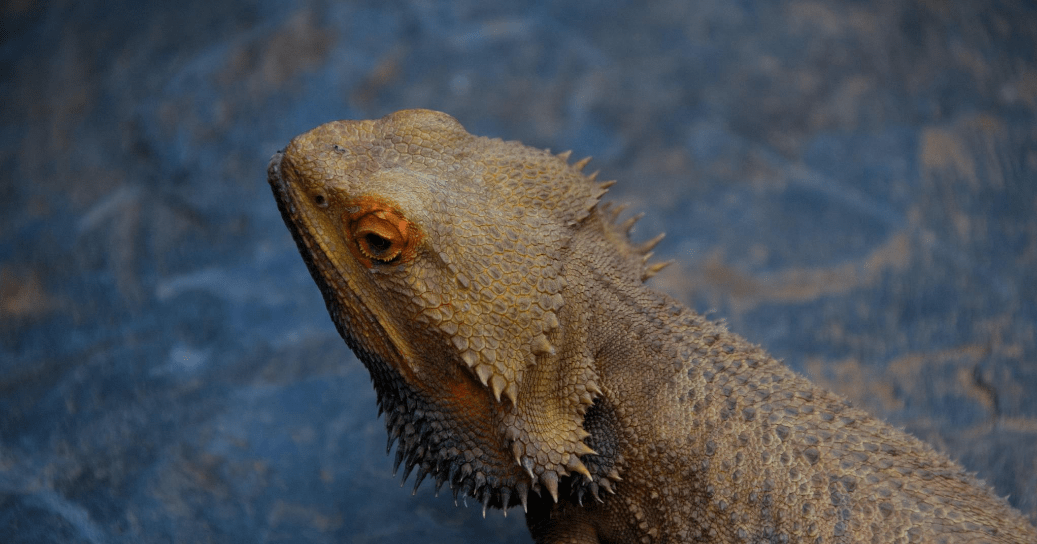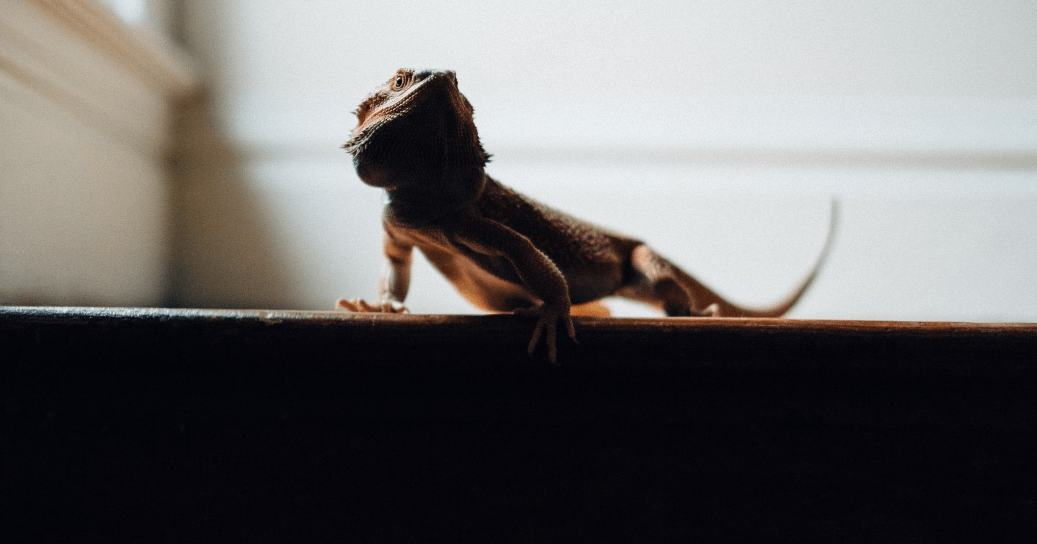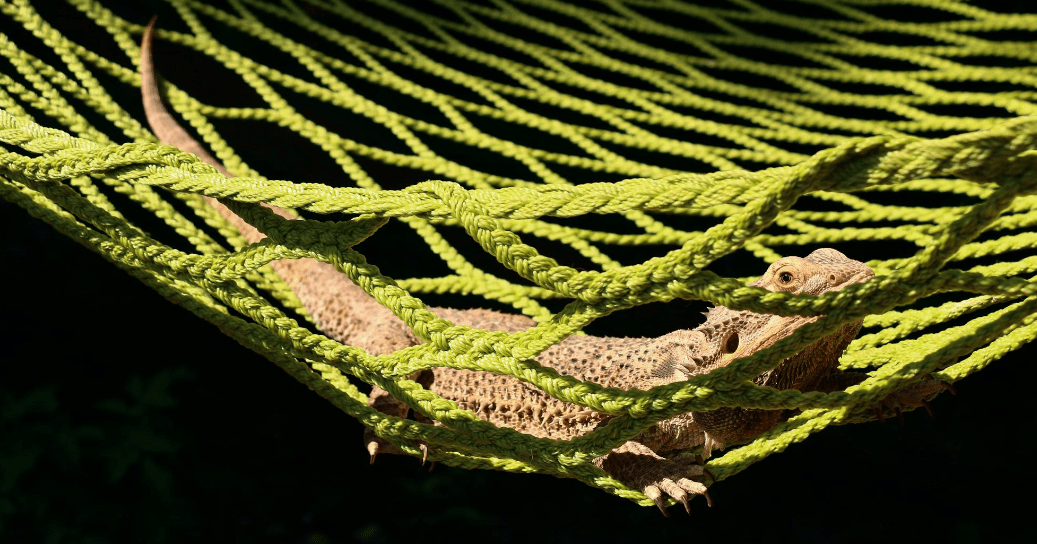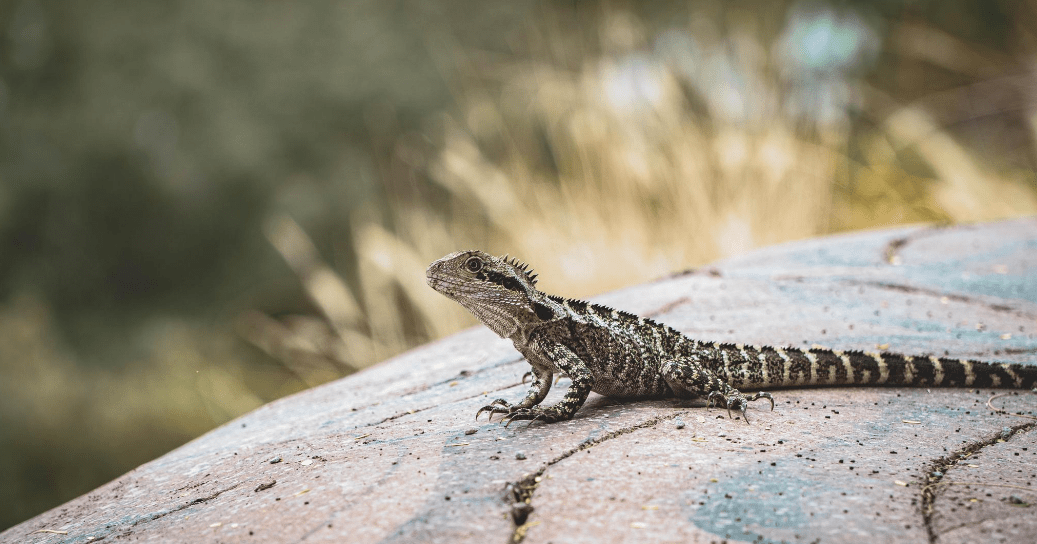The Best Substrate For Bearded Dragons – Safe and Dangerous Lists
When it comes to choosing the best substrate for your bearded dragon, there are a lot of different options to choose from.
There are safe substrates and dangerous substrates, so it is important that you know which ones are safe and which ones can be dangerous for your reptile.
In this blog post, we will discuss the best substrates for bearded dragons and provide a safe list as well as a dangerous list.
Bearded dragons are often considered one of the best pets for children because they can be handled and cared for by younger individuals.
This article will explore what is necessary to care for a bearded dragon, with a focus on the best substrate for bearded dragons.
What is Bearded Dragon Substrate?
A substrate is a material that makes up the surface on which your pet lives.
The type of substrate you use will depend on a few factors:
What is the size of the bearded dragon enclosure that you have? Is it an indoor or outdoor enclosure? How much money are you willing to spend? And finally, what kind of climate do you live in?
There are many substrates available from newspaper, reptile carpets, bedding made out of coconut fiber or paper pulp, and more!
Each has its own benefits and drawbacks so make sure to choose the best substrate for bearded dragons.
Bearded Dragon Natural Habitat Substrate

Bearded dragons are naturally found in deserts, so if you want to provide the best possible living conditions for your pet, it’s important that you use a substrate that mimics their natural environment.
Desert substrates will help retain the moisture in one corner of your pet’s enclosure while still allowing him to bask in dry areas.
This natural habitat substrate is ideal for bearded dragons: hard-packed dirt, sand mixed with dirt, rocks, leaf litter, and a bit of loose sand.
Do Bearded Dragons need Substrate?
Bearded dragons do not need substrate to survive, they can live quite happily on a piece of an inert material like paper towels.
But using substrate does make the enclosure more aesthetically pleasing and will help to keep your pet happy. It also helps you to monitor their health and watch for potential problems.
23 Commonly Used Substrates for Bearded Dragons
You have several options when it comes to the substrate for Bearded dragons.
1. Reptile Carpeting
This is a popular choice for bearded dragons because it’s inexpensive and easy to clean. It looks similar to indoor/outdoor carpeting but is made from non-toxic, reptile-safe material.
Bearded Dragons may ingest pieces of this substrate so it’s important to check it daily.
2. Newspaper or Paper Towels
These materials are safe for pets and easy to clean up. Bearded dragons can easily damage these so it’s recommended that you use an under-tank heat mat to keep them in place and prevent escape.
Paper Towels: Best for young and juvenile bearded dragons. The risk of ingestion is low for young beardies, but it’s still possible.
Make sure to check the substrate daily to prevent any ingestion of paper towels.
3. Ceramic Tiles
Best for older, larger, and more sedentary beardies. Since they are heavy and not as flexible, it’s unlikely that a beardie would accidentally ingest one.
Ceramic tiles are easy to clean but make sure that they aren’t treated with any chemicals (i.e. glazed), and that they are large enough that your pet can’t swallow them whole.
4. Slate Tiles
Best for large, older bearded dragons. These are made from naturally occurring materials so they’re completely safe for your pet’s habitat.
The only drawback is that they can be difficult to clean, so make sure to remove any leftover food particles with a paper towel.
5. Granite Tiles
These are also made from naturally occurring materials, but they’re more expensive than other substrate options.
Bearded dragons may ingest pieces of this substrate so it’s important to check it daily.
6. Coconut Fiber
This substrate is a great choice for bearded dragons because of its moisture retention properties and ability to
This substrate provides a natural-looking environment and is easy to clean. Its organic material will help keep the enclosure moist but make sure that your bearded dragon can’t ingest too much of it at a time.
7. Paper Pulp
This substrate may not be as aesthetically pleasing, but it’s healthier for your pet. Paper pulp bedding will also help to control odors, making it easy to clean up after your beardie.
8. Non-Adhesive Shelf Liner/ Linoleum
This substrate is easy to clean, economical, and requires no effort! Just remove the soiled material and replace it with a clean sheet.
Make sure that you wash this material to remove any potentially harmful chemicals.
Another thing to pay attention to with non-particle substrates is traction, for example, the non-adhesive linoleum can make the beardie not walk on it because it was too slippery.
A way to solve this is to cover the linoleum with pet-safe silicone then sprinkle sand and gravel on top of it.
9. Alfalfa Pellets
Alfalfa pellets are a good substrate for bearded dragons because they provide natural moisture retention and prevent the growth of mold or fungus. But since alfalfa pellets are small and could be easily ingested by your pet, it’s important to monitor him closely.
10. Millet Seeds
Millet seeds are widely used for feeding many types of pets, including bearded dragons. As long as you regularly clean up any leftovers, they are a safe substrate that will provide your pet with some dietary fiber.
11. Slate Chipping
This substrate provides good drainage while being easy to clean. However, it’s important to ensure that your pet can’t ingest too much of the material at a time.
Also, be sure to check underneath the chip bedding often to make sure that your bearded dragon isn’t sleeping on a wet surface.
12. Wood Chips or Bark
Best for younger and smaller beardies, since these materials may be easily ingested. However, they provide good humidity levels and are easy to clean up after your beardie.
13. Hay or Straw
This substrate is inexpensive and easy to find, making it a great choice for many owners. However, make sure that your bearded dragon doesn’t ingest too much of it at a time because it could become moldy or dusty.
14. Dirt or Soil
This substrate is readily accessible, but make sure that you only use it if it’s free of any potentially dangerous chemicals.
Dirt and soil may become moldy or dusty, so you’ll need to frequently check your tank.
If you want to use any type of loose substrate, mixing it with top soil works pretty well for bearded dragons.
15. Sand
Most of the desert reptiles that we associate with sand-like bearded dragons, for example, do not live in desert-style sand dunes as everyone thinks.
A lot of their natural substrate consists of hard-packed dirt, sand mixed with dirt, rock, and yes some particle substrate but not entirely.
If you are looking to replicate your bearded dragon’s natural habitat, just sand isn’t the most accurate option.
Although most beardies can’t swallow large amounts of sand, make sure to check your pet’s enclosure every day for bowel movements.
This substrate is aesthetically unappealing and difficult to clean, so it should only be used in temporary habitats.
18. Calcium Sand
Calcium sand is one of the most dangerous substrates since it can make dragons overdose with calcium, has a chance to neutralize the stomach acids, and cause all sorts of health problems.
Not to mention that calcium sand tends to harden like cement when it gets wet.
19. Quikrete Play Sand
Play sand is a popular loose particle substrate and much more batter than calcium sand and most other substrates you can find at pet stores.
That doesn’t mean it doesn’t have its disadvantages, and personally, I’m not a big fan of just using sand in the bearded dragon enclosure.
This substrate can make a good choice for both adults and younger bearded dragons if it doesn’t have any chemicals added to it. Here you can find a warning label from a bag of Quikrete Play Sand.
However, make sure that your pet doesn’t ingest too much sand at a time.
20. Walnut Shells
This substrate can cause bearded dragons to swallow, so it’s important to monitor your pet closely. Also, the shells may become moldy or dusty, so it’s important to check your pet’s habitat daily.
21. Rocks or Pebbles
These substrate options are easy to clean and provide good drainage. However, they may become moldy or dusty if they’re not cleaned regularly.
Make sure that your bearded dragon can’t ingest too much of these materials at a time, and keep them out of reach because they could cause impactions or injury.
22. Corn Cob
This substrate could be dangerous for your bearded dragon because it’s difficult to clean if ingested. Also, it may become moldy or dusty, making it a poor choice for most bearded dragon habitats.
23. Bioactive Substrate (Combination of Substrates)
This substrate is made from an organic base that includes several types of substrates, which are fertilized with beneficial bacterial to provide a balanced environment.
If you choose to use this substrate, ensure that it’s free of any dangerous chemicals.
What Substrate is Safe for Bearded Dragons?

The best substrate for bearded dragons is a combination of safe substrates that provide good humidity levels and drainage. If you’re looking to purchase a substrate, be sure that it’s safe for your pet.
Bearded Dragon Substrate Materials to Avoid

There are several substrates that aren’t safe for bearded dragons, including walnut shells, corn cob bedding, and calcium sand.
If you’re looking to purchase a substrate, make sure that it’s not on this list.
Different Bearded Dragon Substrates for Different Needs
In addition to choosing a safe substrate, you’ll also need to choose a substrate that meets your bearded dragon’s needs.
For example, if your pet isn’t an adult, it may not be able to ingest larger substrate materials. Also, keep in mind that baby bearded dragons are relatively small and don’t need a lot of room, so you’ll want to purchase smaller substrate materials.
When it comes to caring for bearded dragons, keeping their habitats clean is an important part of their health.
However, you’ll only need to replace the substrate if it becomes old or starts to smell bad.
The Best Substrate for Baby Bearded Dragons
For baby bearded dragons, you may want to use a paper towel as their substrate. This allows you to easily replace them if they become soiled or dirty.
The Best Substrate for Female Bearded Dragons
For female bearded dragons, you may want to use a paper towel as their substrate. This allows you to easily replace them if they become soiled or dirty.
Substrate for Bearded Dragon Egg-Laying
Damp play sand is actually a great substrate to use for egg-laying for gravid females and using it in a dig box can lessen the dust.
When your bearded dragon lays its eggs, it’s important to separate the eggs from the rest of the habitat.
However, you’ll want to make sure that the substrate you use is shallow to make it easier for your pet to dig.
You may also want to use a paper towel or other substrate that can be easily replaced.
Bearded Dragon Loose Substrates
Some pet owners choose to use loose substrates for their bearded dragon substrate. If you choose to use this type of substrate, there are certain precautions you should take to ensure that your pet can’t ingest it.
When using any particle substrate, one of the concerns is impaction.
Bearded dragons tend to lick everything and this is the way for them to explore their environment, meaning that every time they are on the ground, they will start to ingest some substrate.
Also if they are fed on a loose substrate, they can get a mouth full of it when they catch food off the ground.
Substrates that can produce a lot of dust like dust, can also cause eye infections and respiratory issues if they breathe it in.
Just be sure that the substrate is deep enough to allow your pet to burrow, but not so deep that your pet can get stuck.
Bearded Dragon Cage Bedding Substrate
When it comes to the substrate for bearded dragons, you’ll need to choose a substrate that provides proper drainage.
This is especially important if your pet is an adult. Also, be sure to only use a substrate that’s safe for your pet and that doesn’t contain dangerous chemicals or toxins.
Bearded Dragon Digging Substrate
Digging is a natural behavior that encourages exercise and gives them something interesting to do.
If you choose a non-particle substrate providing a dig box is a great way to allow your bearded dragon to express his instincts.
Popular digging boxes substrate include play sand, topsoil or sand mix, alfalfa pellets, and millet seeds.
Bearded dragons spend a lot of time digging their substrate. If they aren’t provided with the right type, they might become bored and stop digging.
In addition, a bearded dragon may stop digging if its substrate becomes too deep or it can’t reach the surface.
How Often Should I Change my Bearded Dragon Substrate?
When it comes to the substrate, you’ll need to change it if it becomes soiled or dirty.
However, the frequency of changes will depend on a number of factors, including how many bearded dragons you have and their age.
For example, if you have baby bearded dragons, they may need substrate changes more frequently.
How to Clean a Bearded Dragon Substrate
If you need to clean the bearded dragon substrate, be careful not to oversoak it.
Oversoaking can cause exposure to dangerous chemicals and toxins, including those that may be lurking in the substrate you use.
Bearded Dragons and Substrate: Best Practices for Pet Owners
When it comes to caring for bearded dragons, knowing how often they need their substrate changed is important. However, you’ll also want to make sure you purchase the right type of substrate for your pet and its needs.
When it comes to keeping your bearded dragons healthy, knowing their habitat needs is essential.
However, you’ll need to make sure that the substrate for your pet doesn’t contain dangerous chemicals or toxins.
Conclusion
In conclusion, there are many different substrates for bearded dragons. However, it’s important to make sure that the substrate you choose is safe and won’t put your pet at risk of exposure to dangerous chemicals or toxins.
We hope this article has been helpful in making a decision about which type of substrate will work best for your pet!
If you have any questions about caring for your pets, feel free to reach out – our team would be happy to help with anything from choosing the right beardie habitat setup or providing an expert opinion on what kind of food they should eat.



